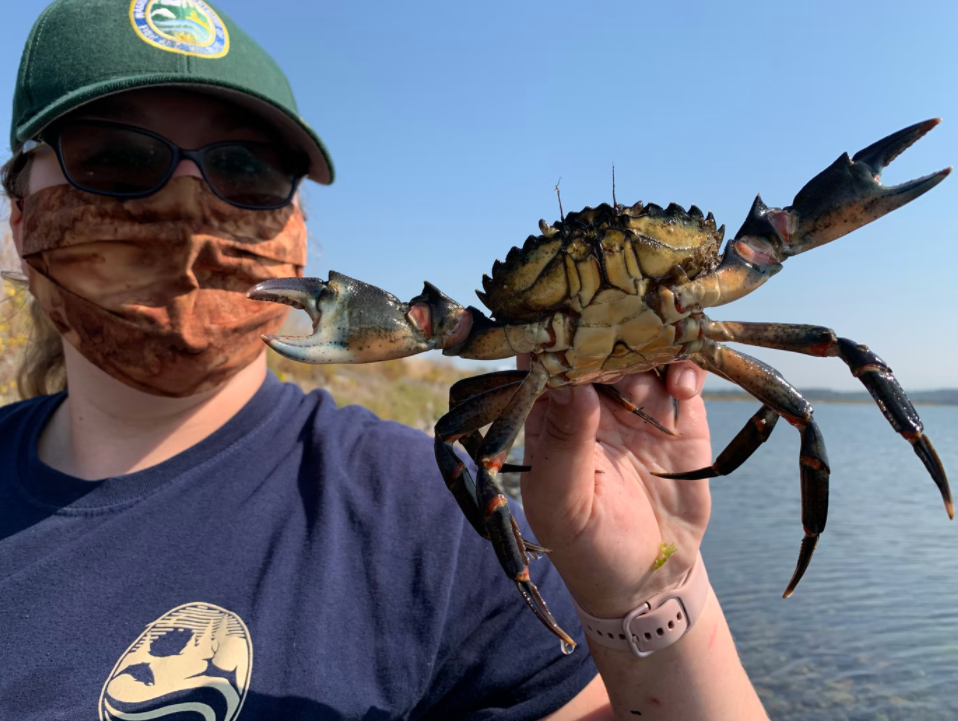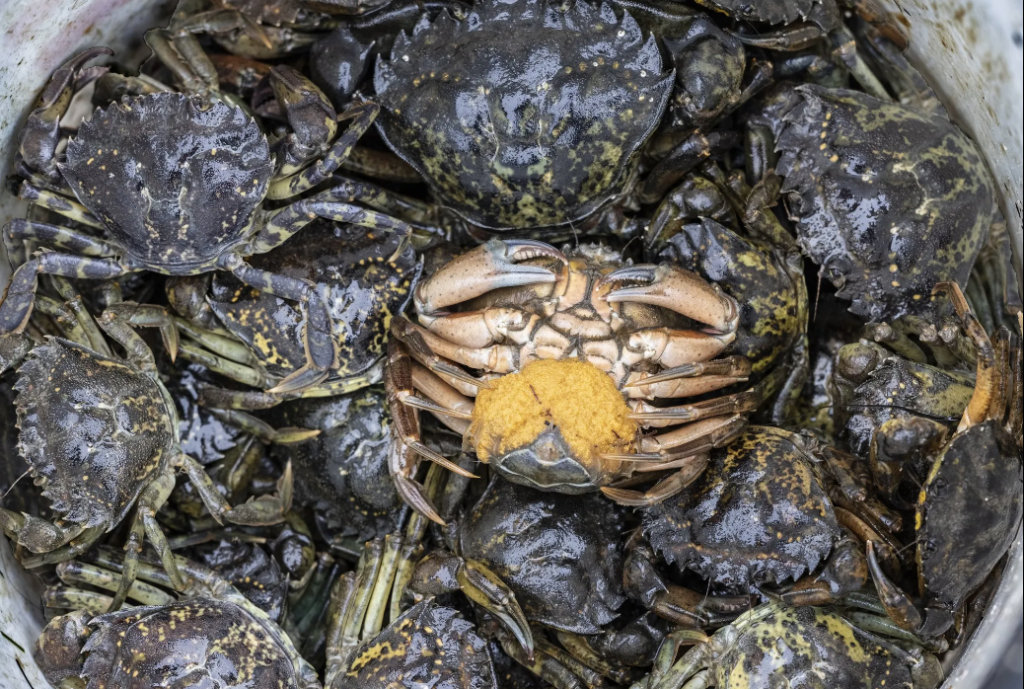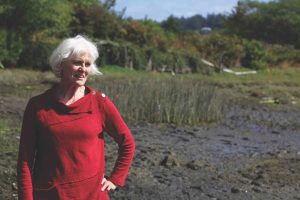
By DANA TIMS/YachatsNews.com
European green crabs are by no means strangers to Oregon’s coastal waters.
The voracious and habitat-destroying invasive species has been found in crab pots here, particularly in sloughs and estuaries, for more than a quarter century.
But spiking numbers now have state officials poised to take action to address a problem that’s severe enough in neighboring Washington that the state’s governor has issued an emergency order calling for eradication.
“It’s serious business,” said Mitch Vance, shellfish project leader for the Oregon Department of Fish & Wildlife in Newport. “We’ve monitored this for many years, but the numbers we’ve seen in the last couple of years are certainly higher than in the past.”
One proposal expected to be approved as early as this spring calls for increasing the number of green crab that recreational crabbers can take in any given day. Currently, that number is 10 – two less than the number of native Dungeness crab that constitute a day’s “limit.”
While no new number has yet been agreed upon, state officials and marine biologists are looking at something close to 35.
Vance noted that crabbers who find green crab in their pots currently are in a quandary because green crab are on the state’s prohibitive species list. That listing prohibits anyone from putting a banned species back into the water.

Upping the limit
Since adult green crabs are considerably smaller than Dungeness, a limit of only 10 doesn’t leave anyone who catches them much to work with.
But since green crab are fine to eat – several cookbooks devoted to green crab recipes are on the market – the idea is to set the daily limit at a high enough figure to make catching them worthwhile.
Vance said he is not a proponent of unlimited harvest, however, because green crabs, despite their colorful name, aren’t always green when they come out of the water.
“They aren’t perfectly identifiable,” he said. “Depending on conditions and time of the year, you’ll find different sizes in different areas and different colors.”

What is agreed upon is that green crabs present threats to both native habitat and existing ocean species.
“Green crabs are predators and ecological engineers,” Sylvia Yamada, an Oregon State University biologist and a long-time leading researcher on green crabs, said during a recent presentation. “They can decimate cockles, mussels and urchins.”
In addition to feeding on young Dungeness, their habit of sifting through sandy sediment in search of food is lethal to the eelgrass meadows that are to numerous ocean creatures what old-growth forests are to myriad on-land species, she said.
“They can transform an eelgrass meadow to bare sub-strait,” Yamada said. “Remove that ell grass and you remove a whole community.”
A report released late last year sounded alarm bells about the growing European green crab population throughout Coos Bay. The report, part of an ongoing study by scientists at South Slough Reserve and OSU researchers, found that, on average, 73.3 percent of crab species trapped at 13 sites around Coos Bay were green crabs.
“Green crab numbers have reached a critical point where we can begin to expect negative impacts on surrounding coastal and estuarine habitat and other organisms,” Shon Schooler, lead scientist and research coordinator at South Slough Reserve, said in a statement accompanying release of the report. “This in turn may impact our local fisheries.”
A long, circuitous journey
Green crabs, native to Northern Europe, have been regarded as culinary delicacies for decades, Yamada said. They appeared on fish-market lists in London around 1850 and satisfied high Spanish demand for paella around the same time.
The crab, by both boring into the hulls of wooden vessels and surviving long periods on the solid ballast that stabilized them, made its way to South Africa, Japan, Argentina and Australia, among other places, according to a 2008 report developed for the U.S. Environmental Protection Agency.
Green crabs were first discovered on the East Coast of the United States in 1817, but didn’t make their way west until 1989, when they were found in San Francisco Bay. From there, green crab larvae caught ocean currents, which fairly quickly swept them north toward Oregon.
At this point, green crabs are so well established in many West Coast estuaries and sloughs that any long-term goal of ultimate eradication may no longer be possible, Yamada said.
If ocean temperatures were to remain as cool as they have been historically, nature might take care of the problem, she said, noting that green crabs, with their short, five-year life span, might die out entirely if immersed in the cool temperatures they don’t prefer.
But given a decided trend toward a warming ocean, that sort of natural extinction is becoming less and less of a possibility, she said.
A sense of urgency
That certainly seems to be the case in Washington, where more than 70,000 green crab were trapped and removed last year from the Lummi Nation’s Sea Pond near Bellingham.
Those numbers have sounded alarm bells there, where Gov. Jay Inslee has issued an emergency order addressing the “exponential increase” in the European green crab population.
The order directed state fish and wildlife officials to implement emergency measures to “effect the eradication of or to prevent establishment and expansion of the European green crab.” It also asked the state Legislature to provide emergency funding as soon as possible to aid the effort.
The Oregon Dungeness Crab Commission is among a growing number of groups in this state urging closer attention to the green crab invasion.
“They are definitely on our and a lot of peoples’ radar,” said Tim Novotny, the commission’s communications manager. “Right now there’s not a lot that can be done about it, but with the uptick in crab numbers we’ve been seeing the past few years, I think this is going to get a lot more attention.
“It’s a potential threat to the Dungeness crab population. And anytime there’s a threat to the stock, there’s a concern for the fishery.”
A good first step, he mused? Increase the daily catch limit and go out and grab yourself a cookbook.
- Dana Tims is an Oregon freelance writer who contributes regularly to YachatsNews.com. He can be reached at DanaTims24@gmail.com




















